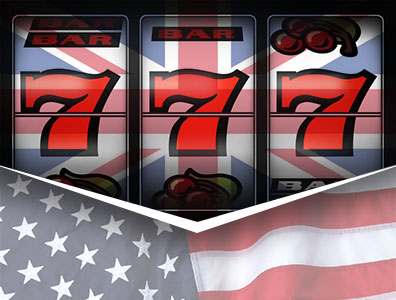On this page
UK Slot Machines for a US Audience
Introduction
OK, so as the UK and the US are often described as two nations divided by a common language, perhaps I should start by asking what does “slot machine” actually mean. Clearly, at its most literal it means a machine with a slot, a slot which could be for any purpose, not necessarily the receipt money! However, I think we can all agree that the term, as used, actually means a machine whose function is initiated by inserting money in a slot. Many people refine that further by presuming the purpose of such a machine will be for gambling. That, however, is not generally true.
We don’t include as slot machines, machines such as vending machines, ATMs, money changers, washing machines because they have other generally accepted generic names, such as “vending machine”. Hence, we get down to the general area of entertainment. At that point, opinions differ, but here in the UK, it means any machine whose purpose is amusement. Thus gambling, being a form of entertainment, is included in that broader definition.
Early Differences
Right, having got that out of the way, what are amusement machines? Well, I’m pretty sure both sides of the pond have plenty of machines which are “for amusement only” with no gambling involved, however, that is where our two nations started to divide. That was almost entirely down to gambling laws in the late nineteenth and twentieth centuries. Gambling in this country has always been strictly controlled at a national level, particularly during the years when amusement machines were first being developed. Thus it was that amusement only machines appeared over here in a multitude of forms.
Of course, right from the start, that didn’t stop us also wanting to have machines whose purpose was gambling. So how did we achieve that? By developing machines in which it could be claimed there was a major element of skill, rather than simply random chance. We then had to browbeat the government to accept that idea. Hence the government relented and introduced the term “Amusements with Prizes” or AWP for short. They also imposed very low payout limits to ensure that gambling, as they saw it, was not occurring. So whilst the US was cheerfully developing the rotating reel machines, some with the large jackpots that many people think of when the term “slot machine” is used, we were developing very different machines.
Now at this point I could start a treatise on the subject of vintage UK machines which would rival War and Peace in length, but the subject has been well covered elsewhere. So I shall be relatively brief here but point you at the following websites, loads of pictures, which do a much better job with the subject than I ever could.
First a disclaimer, we did not invent the basic ideas which go into our machines. Most were German ideas, but we ran with them harder and faster! If you want to read about “for amusement only” machines then I suggest you investigate the links above as I am going to concentrate on AWP machines, given that the “The Wizard’s” readers are almost certainly more interested in the concept of winning!
The most common, almost ubiquitous, format for AWP machines is what became known as the Allwin. The name is generic in the same way as Biro is generic. Most ballpoint pens are not made by Biro, but they still get called biros. Allwin is a similarly used term. It derives from the earliest machines whose advertising read “All cups are winners”, which became shortened to Allwin and subsequently became generic. What does “All cups are winners mean”? Well, have a look at the following early machine...
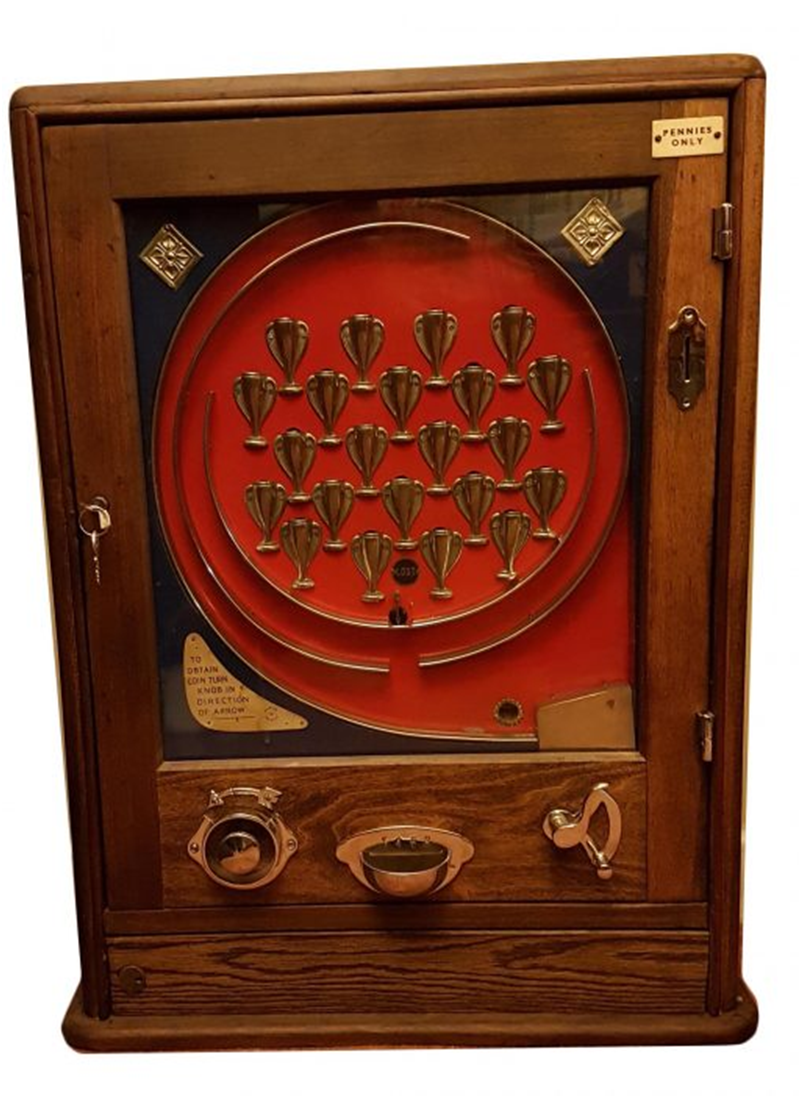
On inserting a penny into the slot on the right, a ball bearing drops out of the small hole at the bottom right behind the glass front. You then use the trigger at the bottom right of the cabinet to fire the ball around the broken spiral. There are three possibilities...
- The ball drops back to you, so you fire it again
- The ball drops into the small hole at the bottom of the innermost section of curved metal, in which case you have lost
- The ball lands in one of the cups and as "all cups are winners" you have won.
Should you be lucky enough to win, you turn the payout knob at the bottom left of the cabinet one whole turn and the standard payout for the machine drips into the coin slot at the bottom middle of the cabinet.
That is basically what all Allwins do. There is some form of vertical track around which a ball is propelled and some form of target holes, cups or channels into which the ball falls to determine the outcome of the game.
Simple isn’t it? But the number of variations upon that theme almost beggars belief! What can be varied? The precise shape of the ball track could vary and might not even be a spiral. The payouts from individual targets might vary. The number of balls used might be more than one and in some instances ran into double figures. Some machines have a “free ball after win” option. The graphics on the machine could be anything an artist can create. The payout is not always money! Variants of these machines have paid out chocolate bars, tubes of mints, cigarettes and other such small items. The targets could be holes or cups or catching forks or levers to be tipped or channels or a “gallery” of channels separated by pins set into the backplane. Some machines had more than one gallery. Here is an example of a gallery from my machine...
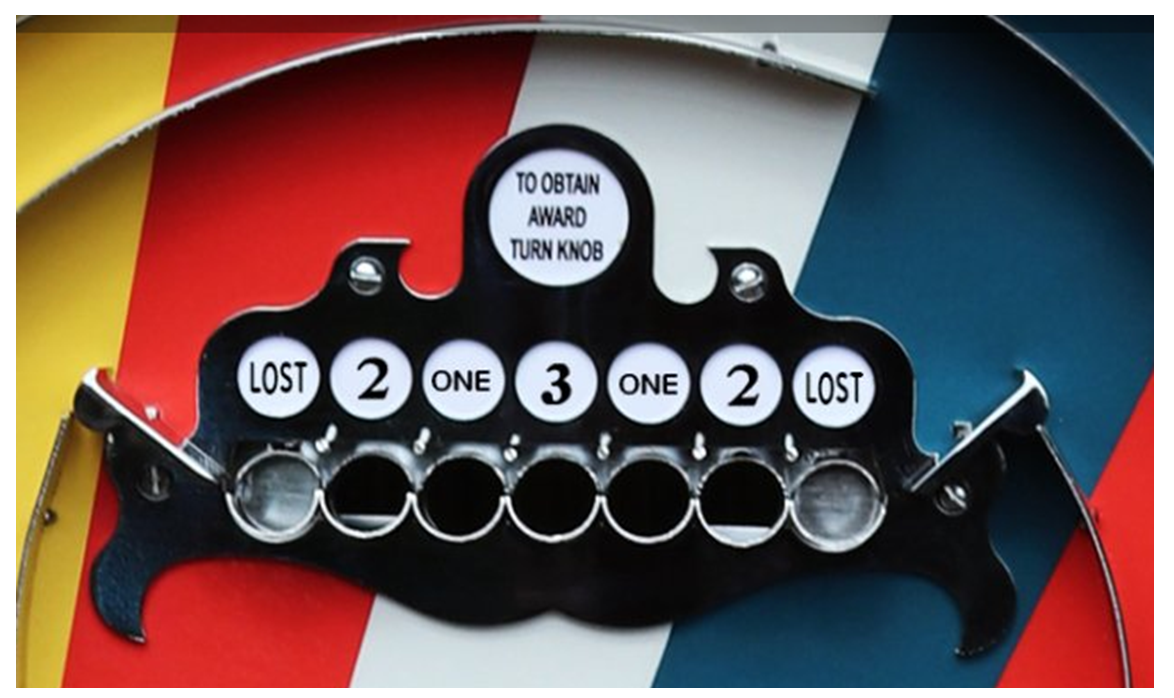
My machine is a modern one, built to order by Retro Arcade. It is based on one of the most common arrangements called a Fivewin. This is because the gallery has two losing channels but five winning channels, as above. With the different payouts for the various channels, when you win, you have to turn the payout knob as many times as is shown on the decals to get the full payout. As I am merely playing with my own money; I obviously have the free ball feature enabled.
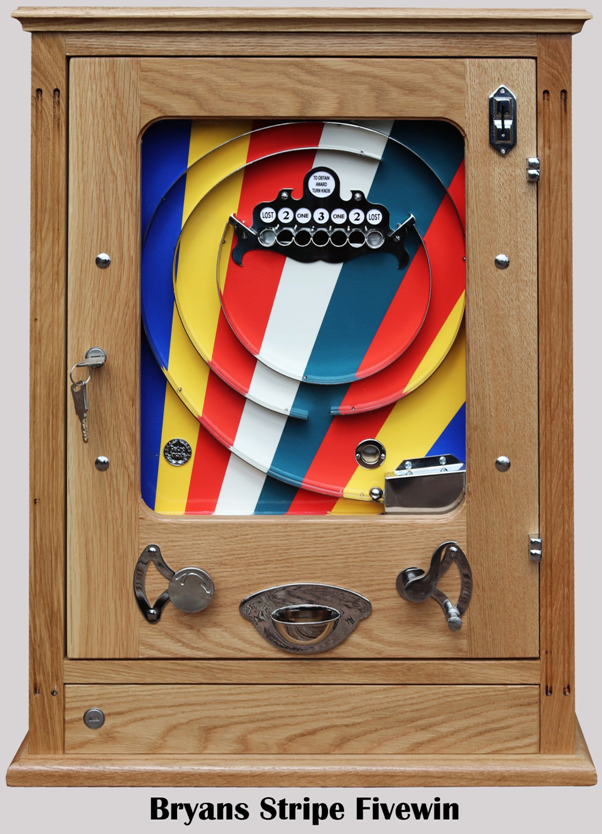
I'll show you one more example, just by way of illustrating that the ball track wasn’t always a spiral...
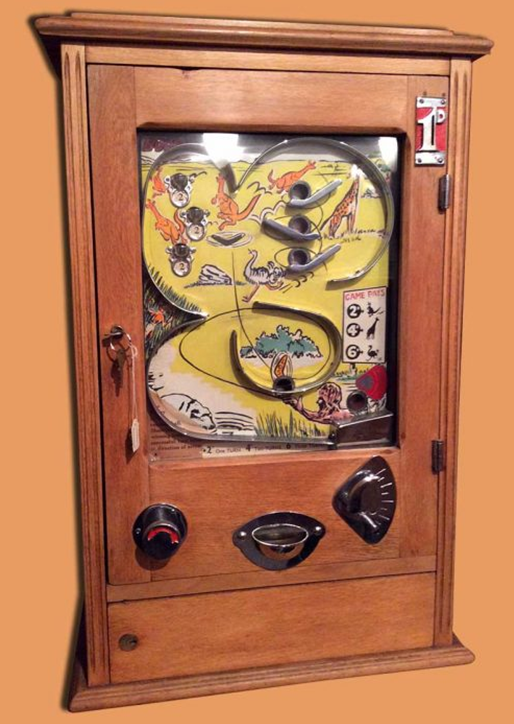
That one is called Boomerang. Please don’t ask me how it works, I've never played one!
As I said above, there were many other designs as well as Allwins and as time went on and electro-mechanical machines started to appear the number of designs exploded. However, many of these were just games of chance and therefore needed a license to operate. So as we have got as far as games of chance then we might as well get on to the traditional 3 reel slot machine.
More recent and current differences
When mechanical 3 reel slots finally arrived here, largely from Germany again, before our own designs took over, they were pretty much the same as those to be found in the US. However, most of them only took very small stakes and had very small payouts. To find the more serious gambling machines that US readers would recognize, you had to be a member of a private club (there were no casinos back then). This was all down to licensing laws, not the machine designers.

There was one minor design difference between the UK and US at this stage, which still persists to this day, the idea of having blank symbol positions on the reels never caught on over here.
As with AWP machines, electro-mechanical machines soon took over the 3 reel slot arena. At that point the machines started to diverge more significantly from US concepts. Some of our ideas have transferred back across the Atlantic so remember I’m talking about a long time ago before that happened. The first divergence happened almost immediately, that was the introduction of Hold buttons below each reel. These would all be lit at once at random after you inserted a coin, but not immediately after a previous win. Hence you could keep one or two symbols from the previous spin (three would be a nonsense). And what if you changed your mind? They added a Cancel button so you could change your selection. But this is a cutthroat business and it didn’t take long for “Hold after Win” to be added.
In the same vein, to gain a competitive edge, Nudge buttons were added together with a display indicating how many nudges you could have, where that number was selected at random. Hence, after spinning, you could cause any of the reels to advance, (nudge down) one symbol at a time to hopefully reach a winning combination with the number of available nudges. As with Hold, this feature occurred at random. Obviously trying to figure out the reel layout became an essential part of playing, except for casual players who would peer up the reels trying to see what was coming next. It wasn’t long after that that a second set of Nudge buttons appeared. These allowed you to nudge the reels up and could be used in conjunction with the nudge down buttons.
These features became so popular that for decades now you will not find any new UK machine which does not have Hold and Nudge Down and Nudge Up buttons. The market has made them mandatory.
The popularity of these features set the creative juices of the designers going. If adding features was so popular, they reasoned, why don’t we think of more features to add? If you’ve ever played a modern video poker game you will be familiar with the “double or bust“ concept. Something similar was done on some machines. A ladder was added to the display which showed all the normal payouts with a Lose position at the bottom. When you won, unless it was already the maximum payout, your win value would be lit on the ladder and the payout above yours and the Lose lights would start to alternately flash rapidly. You then had a choice, press Collect to take your win or press Gamble to try to stop the flashing lights on the next higher win. Catching Lose obviously lost your whole win. You could work your way up the ladder in this way all the way to the maximum payout or you landed on Lose or until you decided to Collect. A variation on this was to flash the light below the win instead of Lose (unless you were at the lowest payout) and the sequence would end automatically if the lower light ended up lit when you would win only that reduced payout.
Sometimes these subsidiary games were not triggered by hitting a win on the reels, rather some of the symbols on the reels would have special backgrounds or additional symbols as subscripts. One popular method was to have subscripted numbers, the idea being that if the total of the numbers was equal to or greater than some target value, that would trigger the feature. This would often lead to a nice player quandary. Suppose 3 plums is a winner, but the last game came up “plum, lemon, plum”. When you put in your next coin, the Hold buttons light up. What do you do? Normally you would consider holding the two plums, yes? But suppose one plum has a subscript 5 and lemon a 4 and the other plum has no subscript, and that the target to start the feature is 10. Now, what do you do? Try for the 3 plums by holding the two plums showing, or hold the 5 and 4 thereby giving up the possibility of a winner on the reels in the hope of getting any subscripted number to go with the 5 and 4 which will start the feature? Tricky one that. Unless you have been playing that machine long enough to have mapped precisely what is on each reel that is a tricky decision.
Various other “additional feature” games were thought up as alternatives, even including games based on board games such as Monopoly. Of course Pandora’s Box was now open and it was only a matter of time before machines with more than one feature appeared. And then, of course, someone added the concept of being able to transfer from one feature to another in mid-play of another feature. The result of this is that modern UK slots have a hypnotic array of lights associated with all the features which, when not in play, cheerfully flash away in pretty patterns enticing the moths (sorry players) to the flame.
And do they tell you what all the features are and how to play them? Nope. You have to find out by trial and error, which of course involves making several bad decisions whilst you are learning, which is why I haven’t played them for several years now. Give me a vintage arcade or museum any day of the week, the machines are so much simpler!
You want to see a couple of these modern monsters? OK...
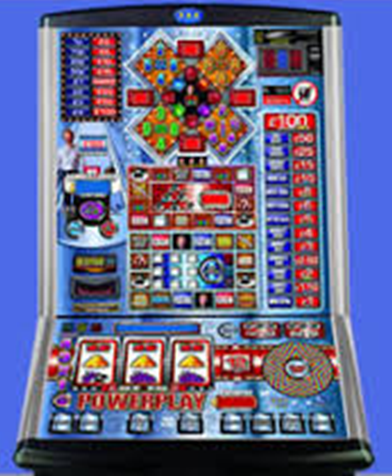
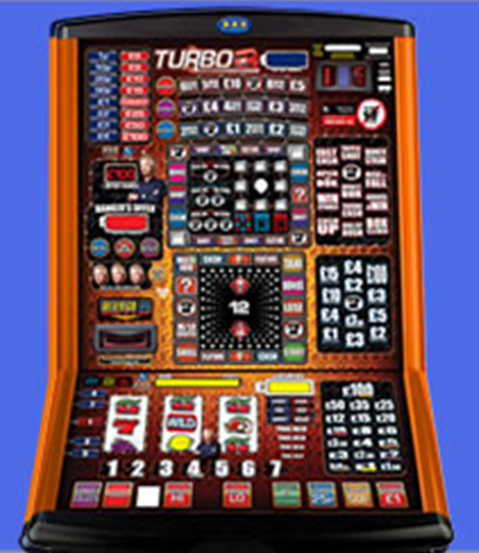
Confused? You should be. I am and I live here!
Jackpots
You may have noticed by now that I haven’t mentioned Jackpots. These are obviously a big pull with US slots. So what is the situation over here?
In the early days, there was no such thing. Remember, we are talking about simple mechanical devices in which no outcome was particularly rare, and a jackpot has, by definition, to be rare, otherwise, the machine will bankrupt its owner rather than the player. Also, remember we had very strict licensing laws (which aren’t much eased in the present day). Eventually, market pressure from the spreading US style slots forced some manufacturers to find ways to provide something which they called a Jackpot, but which in reality was just a slightly larger than usual payout. For example, if the normal payouts to a 1D stake (D is the symbol for pre-decimalization pennies (pre 1971)) were say 2D, 4D and 6D, then the “Jackpot” might be just 12D, but then 3 reel slots had to conform to the same legal restrictions.
You might not get even that much for a Jackpot if the amount of the Jackpot was not preset but was determined by filling a container.
Not surprisingly, these later machines never really caught on as the world of mechanical machines was being left behind. But the introduction of electro-mechanical machines changed very little as the laws had not changed. In fact, the severe restrictions have meant that the very word Jackpot, as applied to the artwork on some machines, meant nothing more than the highest payout even when it was not too far removed in size from the next highest payout.
In more recent times the law has been relaxed, but the machines you are most likely to come across in public places still have very low maximum payouts, but that is relaxed in what are regarded as private places. The highest allowed Jackpot is restricted to Casinos and is £10000 (£20000 for certain progressive types), but after that, it drops right down to £500 in most types of private clubs, £100 in pubs and a mere £5 in other locations. The size of maximum allowable stake and the number of machines allowed also varies significantly. It’s all rather complicated so your best bet is to look at this web site D gaming machines and then select the links to the page for each category of machine in turn. But basically, unless you go to somewhere with either restricted access or where you pay an admission charge or a membership fee, then you will not find anything over £100 payout. Hence, higher payouts are hard to find unless you go looking for them.
Street talk
Most of what you will hear on the streets, in the pubs, and on the web about slot machines in the UK Is pure hokum. Let’s take bribery and corruption. In almost all cases the payouts are so low that it isn’t worth the effort of cheating. Casinos are the only place where payouts are high enough for it to make sense, but as we all know, security at casinos makes the secret service look like school boys!
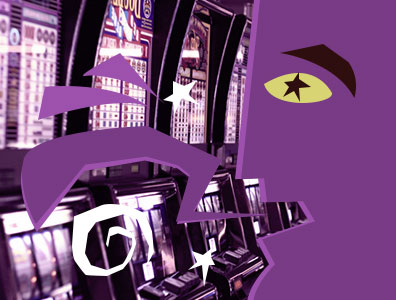
Or how about, “have you noticed how it always loses when...". Basically, we all hate losing so we invent totally spurious reasons for why we lost. If you ever bother to sit down and record millions of outcomes you will find absolutely nothing untoward. Why should there be? The odds are so heavily stacked against you that it makes no sense to go to expense and trouble of making a machine misbehave. “But my online slots all pay…. and that’s not that heavily against me”. No, but actual physical slots in this country have no minimum payout percentage! The only legal requirement is to have a label which displays the overall return to player percentage. I was at a holiday village recently, the machines there were all around 75%! You are going broke by definition so why spend more on making the machine “bent” (and hence illegal)? It’s not worth it.
Simply being rational dismisses every other such thought in similar fashion!
The only thing you might observe, which is in no way illegal is that in a pub the number of customers can vary from almost empty to bursting at the seams. The oversight of the bar staff maybe non-existent. So an observant bartender might notice how often the machine has been paying. If one of his quiet times coincides with an “it hasn’t been paying much” period, he may well choose to play the machine himself. Even that is absolutely no guarantee that he will win big if he even wins at all.
Playing tips
But, having said all that, modern machines have computers which alter the performance of the machine depending upon its recent history. That sounds well dodgy, but each individual outcome is still random, all that has been skewed is the actual odds against specific outcomes. Anything else is illegal. So yes, quietly observing the machine’s performance is advisable if you have the time. The observant bartender is not wrong! However, this is a totally pointless exercise with vintage or retro machines!
If you can observe the reels closely enough and for long enough without being thrown out, then you should do that, otherwise playing nudges is too hit and miss. When you have decided on what your target win is, be very careful how you step the reels. It is all too easy (voice of bitter experience here!) to step the reels such that you first hit a lower paying combination, which is what you will win as nudging is turned off immediately that you hit a winning combination.
What else? The only other thing that makes any sense to me is to only Hold matching pairs of symbols or already winning combinations. Other than that, just don’t play slots!





